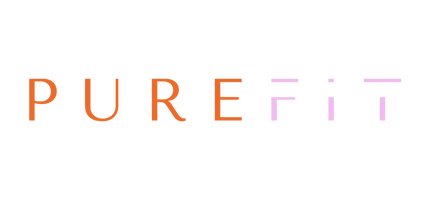What is Protein

Protein is commonly found in animal products but can also be found in other sources like nuts and legumes. The body requires large amounts of macronutrients to sustain life and build muscle mass. When Protein is broken down in the body it helps to fuel muscle mass, which helps with metabolism and helps to provide a strong immune system.
Protein contains amino acids, which are organic compounds that are made of carbon, hydrogen, nitrogen, oxygen or sulfur. According to the National Institutes of Health (NIH), amino acids are the building blocks of proteins and proteins are the building blocks of muscle mass.
People can produce some amino acids, but they have to get others from food. The body needs 20 amino acids in total, nine of which the body cannot produce which are: histidine, isoleucine, leucine, lysine, methionine, phenylalanine, threonine, tryptophan and valine or also known as "essential amino acids," according to the Medical News Today.
Protein foods that contain all essential amino acids are called complete proteins. Complete proteins include meat and dairy products, quinoa, hemp seeds, chia seeds and soy.
Many plant-based proteins such as beans, grains and legumes as well as vegetables are not complete proteins. Incomplete proteins can be combined with other sources of proteins to create a complete protein, and you do not have to consume them all at once. As long as you eat a wide variety of foods, you can usually make complete proteins, even if you're a vegetarian.
Research shows that most Americans should be consuming roughly 0.8 - 1.2 grams of protein for every 2.2 pounds of body weight. Therefore, most people would need about 20-30 grams of protein per meal. By not having enough protein in your diet, it could be hindering muscle growth, metabolism and effecting your hormone levels.
SOURCES OF PROTEIN
All food made from meat, poultry, seafood, beans and peas, eggs, processed soy products, nuts and seeds are considered part of the protein group, according to the USDA. For people who don't eat meat, soy, hemp and whey are good sources of protein.
Whey is usually the most recommended. It's better for building and regenerating muscle mass, so people looking to bulk up or who exercise a lot may prefer it. It's fast digesting and rich in BCAAs. If you’re allergic to dairy, these won’t be good options for you. Whey protein is a byproduct of the cheese-making process and therefore not vegan. It is typically found in supplements, such as protein powders, according to Medical News Today.
Soy protein is effective for promoting muscle growth, and it’s also complete protein. Research shows soy protein supplementation produced similar gains in both strength and lean body mass as whey protein in response to resistance training. Soy is a common allergen, so that may factor into your decision.
Pea protein is highly digestible, hypo-allergenic, and usually inexpensive. It’s rich in amino acids, lysine, arginine, and glutamine but it’s low in EAA methionine, so it’s not a complete protein.
Rice protein – same as pea protein but it’s low in amino acid lysine, so it's not a complete protein.
Hemp protein comes from the hemp plant, which does not have THC (the active ingredient in marijuana), according to the North American Industrial Hemp Council. Hemp is available as seeds, a powder and milk. 30 grams of hemp seeds (around 2-3 tablespoons) provides roughly 11 grams of protein.
Blends – common among plant-based protein powders. Often, they’re used to create a more robust amino acid profile, since different protein sources contain various levels of each amino acid. For example, rice and pea protein are frequently combined.
HOW PROTEIN POWDERS ARE PROCESSED
There are three different ways proteins are processed - Concentrates, Isolates, hydrolysates.
Easiest way to show you is to list them below.
Concentrates – Additional calories from non-protein sources.
Isolates – Additional filtration process. Slightly faster digesting contains less fat and carbohydrates than concentrates. Whey, casein, and milk protein isolates may also be slightly better for people with lactose intolerance, since more processing removes much of the lactose.
Protein Hydrolysates – Extra processing makes it even more easily digested and absorbed. These types are usually marketed toward people who want to gain muscle. Because they’re essentially pre-digested due to their processing – there’s even less lactose in them and can be easier on the GI tract for some people.
Concentrate – 35-80% protein – slower digesting
Isolate – 90% protein – Faster digesting
Hydrolysate – 90% protein – Fastest digesting
Typically, the more processed a protein powder is, the more expensive.
HOW DOES PROTEIN FIT IN YOUR DIET?
Be mindful of your goal. If you're looking for weight loss/fat loss, pay attention to the protein-to-calorie ratio of your protein powder. The best protein powder for weight loss will be higher in protein and lower in carbs and fat.
Protein powder isn’t a nutritional essential, but it is a useful tool. If you’re struggling to meet your protein goals – whether because of convenience or appetite – then protein powder may be exactly what you need. Try choosing one that has more than 20 grams of protein. It is important to think about what you're adding to protein shakes. If you're using a protein powder to make a shake, mix it with water, nonfat milk or a milk substitute. Keep in mind that when mixing fruit in in your protein shakes, it can become very high caloric but adding vegetables will add antioxidants and vitamins.
Good luck with your goals and remember, it's you against you.

